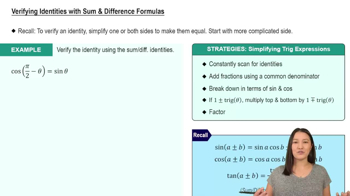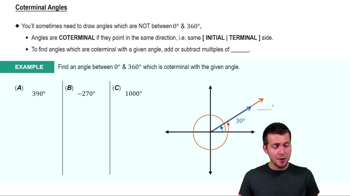Here are the essential concepts you must grasp in order to answer the question correctly.
Sum and Difference Identities
Sum and difference identities are formulas that express the sine, cosine, and tangent of the sum or difference of two angles in terms of the sines and cosines of those angles. For example, the sine of the sum of two angles can be expressed as sin(a + b) = sin(a)cos(b) + cos(a)sin(b). These identities are essential for simplifying expressions involving angles that are not standard angles.
Recommended video:
Verifying Identities with Sum and Difference Formulas
Exact Values of Trigonometric Functions
Exact values of trigonometric functions refer to the precise values of sine, cosine, and tangent for specific angles, typically 0°, 30°, 45°, 60°, and 90°. Knowing these values allows for the calculation of trigonometric expressions without the use of a calculator. For instance, sin(30°) = 1/2 and cos(60°) = 1/2 are exact values that can be used in conjunction with identities to find other values.
Recommended video:
Introduction to Trigonometric Functions
Angle Decomposition
Angle decomposition involves breaking down a complex angle into the sum or difference of two angles whose trigonometric values are known. For example, 75° can be expressed as 45° + 30°. This technique is useful when applying sum and difference identities to find the exact value of trigonometric functions for angles that are not standard, facilitating easier calculations.
Recommended video:
 Verified step by step guidance
Verified step by step guidance


